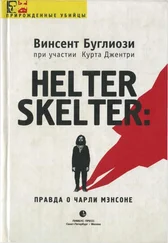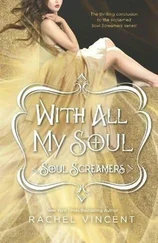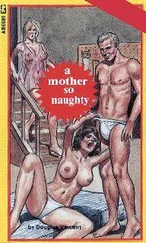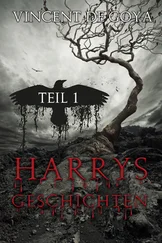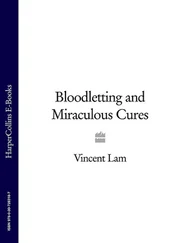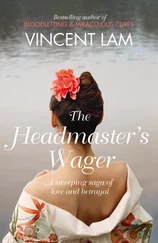Much later I discovered that LASO deputies George Palmer and William Gleason had obtained much of the same information from Stephanie Schram on December 3, 1969, but LASO had not informed LAPD of this.
Frost recalled stocking some three-strand, white nylon rope, but he believed it was ½ inch thick. The Tate-Sebring rope was 5/ 8inch thick. While it was possible that Frost had been mistaken, or the rope had been mislabeled, the defense could argue that it simply wasn’t the same rope.
When Manson was brought to Los Angeles from Independence, Ruby Pearl visited him at the jail. “I only came here for one reason, Charlie,” she told him. “I want to know where Shorty was buried.”
Manson, unwilling to meet her gaze, looked down at the floor and remarked, “Ask the Black Panthers.”
“Charlie, you know the Black Panthers have never been up to the ranch,” she responded, turning her back on him and walking out.
The gun, serial number 1902708, had been among a number of weapons taken from the Archery Headquarters in El Monte, California, during a burglary on the night of March 12, 1969. According to Starr, he obtained it in a trade with a man known only as “Ron.” Manson was always borrowing the gun for target practice, and Randy finally gave it to him in trade for a truck that had belonged to Danny DeCarlo.
None of the .22 caliber bullets recovered during the two searches matched up with the bullets found at the murder scene or those test-fired from the weapon.
Lee determined this by comparing the rim marks on the Spahn shell casings with (1) the rim marks on the shell casings found in the cylinder of the weapon; (2) the rim marks of shell casings test-fired from the gun; and (3) the firing pin of the gun.
On calling the social worker, Linda learned that another girl, posing as Tanya’s mother, had attempted to reclaim Tanya a short time before. Though I couldn’t prove it, I suspected that Manson had sent one of his girls to get Tanya, as insurance that Linda wouldn’t talk.
Later, after obtaining revised estimates from the various attorneys, Judge Older changed this to “three or more months,” after which the hardship excuses abruptly declined.
He later did.
The twelve jurors were: John Baer, an electrical tester; Alva Dawson, a retired deputy sheriff; Mrs. Shirley Evans, a school secretary; Mrs. Evelyn Hines, a dictaphone-teletype operator; William McBride II, a chemical company employee; Mrs. Thelma McKenzie, a clerical supervisor; Miss Marie Mesmer, former drama critic for the now defunct Los Angeles Daily News ; Mrs. Jean Roseland, an executive secretary; Anlee Sisto, an electronics technician; Herman Tubick, a mortician; Walter Vitzelio, a retired plant guard; and William Zamora, a highway engineer.
The six alternate jurors were: Miss Frances Chasen, a retired civil service employee; Kenneth Daut, Jr., a state Division of Highways employee; Robert Douglass, an employee of the Army Corps of Engineers; John Ellis, a telephone installer; Mrs. Victoria Kampman, a housewife; and Larry Sheely, a telephone maintenance man.
For example, Susan Atkins’ confessions to Virginia Graham and Ronnie Howard were hearsay, but admissible under the admission exception to the hearsay rule.
She had taken LSD about fifty times, she testified, the last time being in May 1969, three months prior to the murders.
On the way back to Washington on Air Force One , President Nixon issued a supplementary statement:
“I have been informed that my comment in Denver regarding the Tate murder trial in Los Angeles may continue to be misunderstood despite the unequivocal statement made at the time by my press secretary.
“The last thing I would do is prejudice the legal rights of any person, in any circumstances.
“To set the record straight, I do not now and did not intend to speculate as to whether the Tate defendants are guilty, in fact or not. All the facts in the case have not yet been presented. The defendants should be presumed to be innocent at this stage of the trial.”
Legally, Manson’s statement was an admission rather than a confession.
An admission is a statement by a defendant which, by itself, is not sufficient to warrant an inference of guilt, but which tends to prove guilt when considered with the rest of the evidence.
A confession is a statement by a defendant which discloses his intentional participation in the criminal act for which he is on trial and which discloses his guilt for that crime.
The other one-third of the wounds, Noguchi said, could have been made by a single-edged blade—but he didn’t rule out the possibility that even these might have been made by a double-edged weapon, the unsharpened portion blunting the wound pattern so it appeared, on the surface, that a single-edged blade had been used.
Although for diplomatic reasons I didn’t mention it, Younger, who was currently running for attorney general of California on the Republican ticket, had himself called several press conferences during the trial, much to the displeasure of Judge Older.
I could have broken this down further. A print matching that of a defendant is obtained at only 3 percent of the crime scenes visited by LAPD. Therefore 97 percent of the time they don’t find a matching print. 97 percent is a powerful statistic when introduced in a case where none of the defendant’s prints are found. My reason for not mentioning it in this case was obvious: LAPD had found not one but two matching prints at 10050 Cielo Drive.
Although Parent and Frykowski also had B-MN, there was no evidence Parent ever entered the Tate residence, while there was evidence that Frykowski had run out the front door.
Rice, thirty-one, had a rap sheet that went back to 1958 and, in common with Clem, had been convicted of offenses ranging from narcotics possession to indecent exposure. He was currently on probation for assaulting a police officer. Though new to the Family, he became one of its most hard-core members.
Steuber had been investigating a stolen auto report, not murder, when he talked to Flynn, Poston, Crockett, and Watkins in Shoshone. However, realizing the importance of their story, he had spent over nine hours quizzing them on their knowledge of Manson and his Family. After the trial I wrote a letter to the California Highway Patrol, commending Steuber for the excellent job he had done.
In American criminal jurisprudence, the term “Not Guilty” is not totally synonymous with innocence. “Not Guilty” is a legal finding by the jury that the prosecution hasn’t proven its case. A “Not Guilty” verdict based on the insufficiency of the evidence can result from either of two states of mind on the part of the jury: that they believe the defendant is innocent and did not commit the crime charged, or , although they tend to believe he did commit the crime, the prosecution’s case was not sufficiently strong to convince them of his guilt beyond a reasonable doubt and to a moral certainty.
Shinn’s remarks, in themselves incriminating, were later stricken from the record.
Читать дальше

